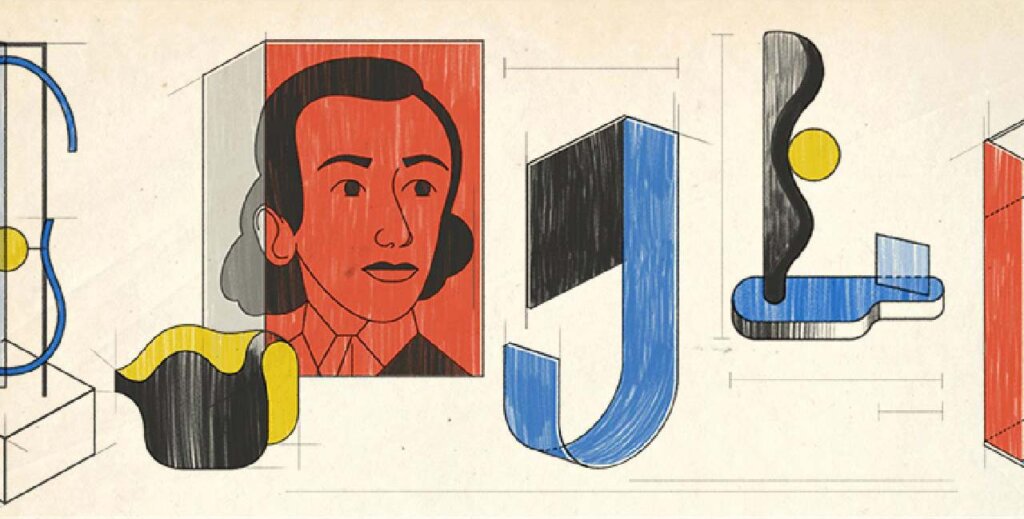Katarzyna Kobro, Google Doodle Pays Tribute To Innovative Polish Sculptor On Her 124th Birthday
3 min read
screenshot/Google
Katarzyna Kobro, a Polish avant-garde sculptor was at the forefront of the Constructivist movement in Poland in the 20th century. As a part of its long-standing tradition of honoring pioneers and innovators, Google Doodle celebrated the 124th birth anniversary of Katarzyna Kobro on January 26, 2022. The Nazis, however, destroyed most of her works during World War II.
#OnThisDay 124 years ago Katarzyna Kobro, a Polish avant-garde sculptor & art theoretician, was born.
— Google Doodles (@GoogleDoodles) January 26, 2022
Her geometric sculptures integrated early 20th-century scientific advancements, reshaping the European approach to abstract art 🎨#GoogleDoodle → https://t.co/X0pOSmAdIs pic.twitter.com/soHfLlA1ro
Who was Katarzyna Kobro?
Katarzyna Kobro was born to a multicultural family in Moscow, Russian on January 26, 1898. Her interest in cultural art forms led her to the Moscow School of Painting, Sculpture, and Architecture. In the following year, she became a member of the left-leaning Union of Painters of the City of Moscow. Consequently, she was work ing in the avant-garde of Russian Modern art.
Jedna z najwybitniejszych rzeźbiarek w dwudziestoleciu międzywojennym, a równocześnie jedna z najtragiczniejszych postaci Katarzyna Kobro urodziła się 26 stycznia 1898 r.
— Marzena (@Marzena12683472) January 26, 2022
Jej życiorys zasługuje na film tymczasem można było zobaczyć ją w obrazie Powidoki, który był o jej mężu. pic.twitter.com/aG4BmfDLkc
As early as 1920, Katarzyna Kobro produced her first sculpture. It was a fusion of shapes of metal, wood and glass. In contrast to traditional art traditions, Kobro aimed to create sculptures that were integral to the surrounding space. As a result, it allowed the environment to permeate her forms. According to her, the most important aspect of sculpture is the relationship between its interior and its surroundings.
She married renowned painter Władysław Strzemiński. As a result, she attained Polish citizenship. Moreover, in 1924, she and her husband fled Russia and settled in Poland. The couple together developed spatial sculptures by incorporating landscape and prefabricated elements, as well as industrial products and prefabricated elements. During the invasion of Poland in 1939, the Nazis destroyed much of her work during a raid on her studio.
New York’s Museum Of Modern Art Preserves Her Collection
Katarzyna Kobro died in 1951. However, many art historians have worked on the restoration and reproduction of her works over the course of the 20th century. The Museum of Modern Art in New York dedicates a permanent gallery to the late artist and her circle, titled “Katarzyna Kobro, Shaping Space.” Moreover, her “radically open structures made from intersecting planes of sheet metal” have left a lasting impact. In addition, the exhibition includes Spatial Composition (5), a sculpture of hers on loan from Muzeum Sztuki in Łódź, Poland.
I love her and I love the doodle! Katarzyna Kobro's 124th Birthdayhttps://t.co/w6SFeOvLMj
— Katya Kotlyar (@katologic) January 26, 2022
Katarzyna Kobro was a leading innovator of Central Eastern abstract art during the early 20th century. In Google’s words, “her utilitarian and geometric sculptures explored the relationship between expression and the infinity of space.”



